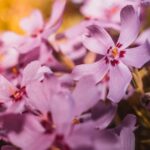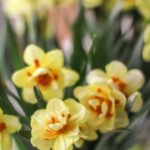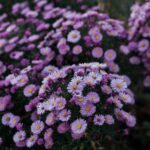Are you considering creating a beautiful flower garden but not sure where to start? Understanding the importance of flower garden layouts designs is crucial in achieving a stunning and thriving garden. From formal to cottage styles, there are numerous types of layouts to consider when planning your own flower garden.
In this article, we will explore the factors that go into choosing the right location for your garden, the different types of layouts available, and tips for designing the perfect flower garden. Whether you’re a novice or experienced gardener, we have everything you need to know about creating a vibrant and aesthetically pleasing flower garden.
When it comes to designing a flower garden, one of the key factors to consider is the location. Factors such as sunlight, soil quality, and drainage can significantly impact the success of your garden. We will discuss these considerations in detail and provide guidance on how to choose the right location for your specific needs.
Furthermore, we will delve into various types of flower garden layouts including formal, informal, cottage-style designs and more. Each layout offers its own distinct charm and character, providing endless possibilities for creating a personalized and visually appealing outdoor space.
Additionally, we’ll share valuable tips and tricks for designing your perfect flower garden that will ensure a stunning display all year round. Whether you prefer bold displays of color or subtle arrangements, there’s something for everyone in our comprehensive guide on flower garden layouts designs.
Choosing the Right Location for Your Flower Garden
When creating a flower garden, one of the most important factors to consider is choosing the right location. The success of your garden depends on its placement, so it’s essential to take into account different factors before breaking ground. Here are some key considerations when selecting the perfect spot for your flower garden:
Factors to Consider:
1. Sunlight: Determine the amount of sunlight that the area receives throughout the day. Most flowering plants require at least 6 hours of sunlight, so choose a location that gets adequate exposure.
2. Soil Quality: Assess the soil quality in potential locations. Conduct a soil test to check for pH levels and nutrient content. Some flowers thrive in acidic soil while others prefer alkaline, so it’s important to know what you’re working with.
3. Drainage: Evaluate how well water drains in different areas of your yard. Flower gardens generally don’t do well in waterlogged soil, so choose an area with good drainage to prevent root rot and other issues.
4. Accessibility: Consider how accessible the location is for maintenance tasks such as watering, weeding, and deadheading. Additionally, think about how easily you can view and enjoy your flower garden from different vantage points around your home.
By carefully considering these factors, you can select the best location for your flower garden and set it up for success from the start.
Types of Flower Garden Layouts
When it comes to creating a beautiful flower garden, the layout is a crucial aspect that can make a big difference in the overall look and feel of your outdoor space. There are several types of flower garden layouts to choose from, each with its own unique characteristics and design elements. Understanding the various types of layouts can help you choose the one that best suits your personal style and preferences.
Formal Flower Garden Layouts
Formal flower garden layouts are characterized by their symmetrical designs and structured patterns. These gardens often feature geometric shapes, straight lines, and well-defined boundaries. Formal flower gardens are ideal for those who prefer a more organized and elegant look, as they exude a sense of sophistication and orderliness.
Informal Flower Garden Layouts
On the other hand, informal flower garden layouts are more relaxed and natural in their appearance. These gardens typically have curved pathways, free-flowing plantings, and a more organic feel. Informal flower gardens are perfect for those who want to create a cozy and welcoming atmosphere, as they provide a sense of freedom and spontaneity in their design.
Cottage Flower Garden Layouts
Cottage flower garden layouts are reminiscent of traditional English countryside gardens. They often feature an eclectic mix of plants, colorful blooms, and charming accessories like birdhouses or vintage decor. Cottage gardens embrace a romantic and nostalgic ambiance, making them popular among those who appreciate a quaint and rustic aesthetic.
Designing the Perfect Flower Garden
When it comes to designing the perfect flower garden, there are several tips and tricks that can help you create a stunning display of blooms. One of the most important factors to consider is the overall layout of your garden.
You’ll want to think about the size and shape of your garden, as well as how it will be viewed from different angles. This will help you determine where to place taller plants in the back and shorter ones in the front, creating a visually appealing arrangement.
In addition to considering the layout, it’s important to think about color and texture when designing your flower garden. Mixing different colors and textures can add depth and interest to your garden bed. Consider using a mix of annuals and perennials to ensure continuous blooms throughout the year. You may also want to incorporate bulbs for an added pop of color during certain seasons.
Another important aspect of designing a stunning flower garden is incorporating hardscaping elements such as pathways, trellises, or decorative borders. These features can not only add visual interest but also help define different areas within your garden. Hardscaping elements can also provide support for climbing plants or help control the flow of foot traffic throughout your garden.
Ultimately, creating a stunning display in your flower garden takes careful planning and consideration. By taking into account layout, color, texture, and hardscaping elements, you can design a beautiful space that brings joy and beauty throughout the seasons.
| Aspect | Description |
|---|---|
| Overall Layout | Consider size, shape, and viewing angles |
| Color and Texture | Mix different colors and textures for depth |
| Hardscaping Elements | Add pathways, trellises or borders for visual interest & define areas |
Selecting the Right Flowers for Your Garden
When it comes to selecting the right flowers for your garden, there are several options to consider, including annuals, perennials, bulbs, and more. Each type of flower has its own unique characteristics and benefits, so it’s important to understand the differences before making your selection.
Annuals
Annual flowers complete their life cycle in one growing season. They are known for their vibrant colors and continuous blooming throughout the season. Some popular annual flowers include petunias, marigolds, and zinnias. These flowers are a great choice for adding seasonal pops of color to your garden and are often easy to grow from seed.
Perennials
Perennial flowers are plants that live for more than two years. They typically bloom during a specific season or seasons each year and then die back during the off-season. However, they come back year after year with proper care. Popular perennial flowers include roses, peonies, and lilies. These flowers can provide long-lasting beauty in your garden and often require less maintenance than annuals.
Bulbs
Bulb flowers, such as tulips, daffodils, and hyacinths, have underground storage structures that allow them to survive adverse conditions and bloom year after year. They are known for their bright colors and unique shapes. Bulb flowers are a great choice for adding early spring color to your garden and can be planted in late fall for beautiful blooms in the following spring.
In addition to these types of flowers, there are also biennials, which complete their life cycle in two years; wildflowers, which are native to specific regions; and flowering shrubs or trees that can add height and structure to your garden. By carefully choosing a variety of flower types, you can create a diverse and visually stunning garden that blooms throughout the year.
Creating a Focal Point in Your Flower Garden
One popular option for creating a focal point in a flower garden is to use a striking piece of garden art or sculpture. This can be a large statue, an intricately designed fountain, or even a colorful mosaic that adds personality to the space. By strategically placing these artistic elements within the garden, you can create areas of visual intrigue that capture attention and add whimsy to the landscape.
Another effective way to create a focal point in your flower garden is through the use of vertical elements such as trellises, arbors, or pergolas. These structures not only add height and dimension to the garden but also provide support for climbing plants like roses, ivy, or clematis. By allowing these plants to grow upwards, you can naturally draw the eye upwards and create a stunning vertical display that becomes the centerpiece of your garden design.
In addition to art pieces and vertical structures, utilizing natural focal points such as flowering trees, ornamental shrubs, or even strategically placed seating areas can help anchor specific areas within the flower garden. These elements serve not only as visually captivating features but also offer practical benefits such as shade, scent, and shelter for wildlife. By introducing these natural components into your garden layout, you can create inviting spaces that encourage exploration and appreciation of nature’s beauty.
Maintenance and Care for Your Flower Garden
Once you have designed and planted your flower garden, it is important to maintain and care for it to ensure that it remains healthy and vibrant. Here are some essential tasks and tips to help you keep your garden in top condition:
1. Regular watering: Depending on the type of flowers you have planted, they will require varying amounts of water. Be sure to water your garden regularly, especially during hot and dry periods. Consider investing in a soaker hose or drip irrigation system to more efficiently water your plants.
2. Weeding: Regularly remove any weeds that may grow in your flower garden, as they can compete with your flowers for nutrients and water. Be diligent about keeping your garden free from unwanted plants to ensure your flowers thrive.
3. Pruning and deadheading: Properly prune your flowers as needed to promote healthy growth and remove any dead or damaged foliage. Deadheading, or removing spent blooms, can encourage new growth and prolong the flowering period of many annuals and perennials.
4. Fertilizing: Consider fertilizing your flower garden periodically with a balanced fertilizer to provide essential nutrients for lush, healthy growth. However, be careful not to over-fertilize, as this can harm your plants.
By following these maintenance tips, you can ensure that your flower garden remains beautiful and vibrant throughout the growing season. Keep an eye out for any signs of pests or disease, and address them promptly to keep your garden thriving. Remember that regular care is key to maintaining the beauty of your flower garden for years to come.
Inspiring Flower Garden Layouts and Designs
When it comes to designing a flower garden, there are countless possibilities to explore. Whether you prefer a formal layout with neatly organized rows of flowers or an informal cottage-style garden, finding inspiration is key to creating a stunning display. One way to spark your creativity is by looking at examples of successful flower gardens and drawing ideas from them.
One popular approach is to create themed gardens, such as a butterfly garden filled with nectar-rich flowers like lavender, zinnias, and milkweed to attract butterflies. Another idea is to design a sensory garden with fragrant flowers like roses, jasmine, and lavender to engage the sense of smell. By exploring different themes and styles, you can find the right inspiration for your own flower garden layout.
In addition to themed gardens, you can also draw inspiration from famous public gardens around the world. Places like the Butchart Gardens in Canada or the Keukenhof Gardens in the Netherlands showcase a wide variety of flowers in beautifully designed layouts. Visiting these gardens or researching them online can provide valuable ideas for your own flower garden design.
| Themed Gardens | Famous Public Gardens |
|---|---|
| Butterfly Garden: Lavender, Zinnias, Milkweed | Butchart Gardens – Canada |
| Sensory Garden: Roses, Jasmine, Lavender | Keukenhof Gardens – Netherlands |
Conclusion
In conclusion, creating a stunning flower garden layout and design is an enriching and rewarding activity that adds beauty to any outdoor space. By carefully choosing the right location, selecting the appropriate flowers, and implementing proper maintenance, you can enjoy a vibrant and flourishing garden. Whether you opt for a formal, informal, or cottage-style layout, there are endless opportunities to showcase your creativity and nurture nature’s beauty.
The key to designing the perfect flower garden lies in understanding the importance of visual appeal and harmony. Incorporating focal points such as water features or sculptures can add interest and draw attention to specific areas within the garden. Additionally, experimenting with different color combinations and plant heights can create depth and texture, ultimately contributing to a dynamic and captivating display.
By embracing the beauty of flower garden layouts and designs, you not only enhance your outdoor environment but also foster a deeper appreciation for nature’s wonders. Whether seeking inspiration from professional landscapers or simply following your own intuition, the possibilities are endless when it comes to creating a unique and breathtaking flower garden. With dedication and care, your garden will continue to evolve and flourish, bringing joy to all who have the pleasure of experiencing its splendor.
Frequently Asked Questions
How Do I Layout My Flower Garden?
When laying out your flower garden, it’s important to consider factors like sunlight, soil quality, and the mature size of your plants. Start by sketching a rough plan of where you want to place each type of flower, making sure to leave enough space between them for growth.
Think about the color, height, and blooming season of each plant to create an aesthetically pleasing arrangement.
How Do You Arrange Plants in a Flower Garden?
When arranging plants in a flower garden, it’s essential to consider their individual needs and characteristics. Group together plants with similar water and sunlight requirements, and consider their mature size when spacing them out. It’s also a good idea to play with textures and colors to create visual interest in your garden.
What Is the Most Effective Garden Layout?
The most effective garden layout is one that maximizes the use of available space while considering the practical and aesthetic needs of the gardener. This may include incorporating mixed plantings, using focal points like ornamental trees or statues, or even creating paths or seating areas within the garden.
Ultimately, the best layout will be one that complements the overall style and purpose of the garden while providing ease of maintenance.

Welcome to my gardening blog! I am passionate about plants and enjoy sharing my knowledge and experiences with others. In this blog, I will write about everything related to gardening, from tips on how to get started to updates on my own garden projects.





